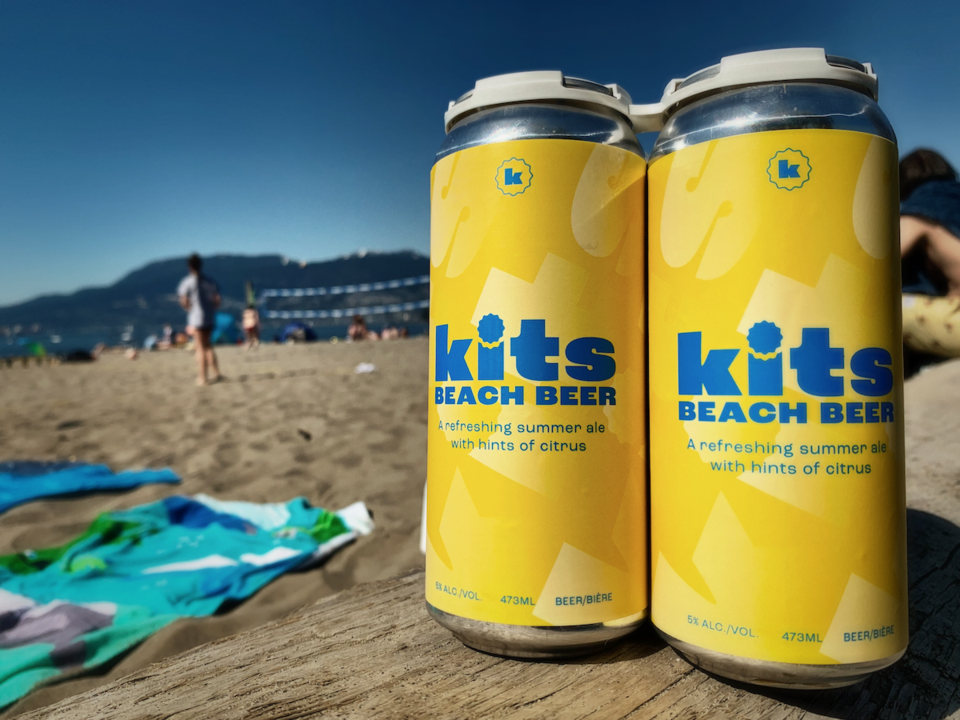The trend of British Columbians drinking less alcohol is picking up steam, according to new British Columbia Liquor Distribution Branch (BCLDB) wholesale data.
The province’s monopoly booze distributor largely saw wholesales increases during the pandemic years, but earlier this year its data started to show British Columbians being more careful with their spending on alcohol. Exactly why that is happening is speculation but inflation and higher interest rates likely played a role in some consumers cutting back on spending and drinking.
The BCLDB tracks and reveals to the public how much alcohol it sells wholesale to its own retail stores as well as to private stores, bars and restaurants.
Its data for the April, May and June period found that wholesale buyers spent a whopping $70,345,826 less on alcohol than they did in the same quarter in 2023. In that quarter this year, those buyers spent $891,380,295 on alcohol, or 7.31 per cent less than the $961,726,121 that they spent in the same three months in 2023.
All categories of alcoholic beverages were down in both total dollars spent and volume of products purchased.
The year-over-year decline in alcohol wholesale purchases in B.C. in the April, May and June quarter was also more than twice as big as the decline in the January, February and March period.
Wholesale buyers spent $732,603,683 in January, February and March, or 3.56 per cent less ($27,039,043) than the $759,642,726 that they spent on wholesale alcohol in the province in those months one year earlier.
One trend has reverted back to form.
In the July, August and September period of 2023, wine overtook the longtime leading alcoholic-beverage category of beer as the one that British Columbian wholesale buyers spent the most on.
After a few quarters of that being the case, beer is back on top.
British Columbian wholesale buyers spent $282,934,521 on beer in the April, May and June quarter of this year. That is $21,076,196 more than they spent on wine in those months ($261,858,325).
Beer sales in the April, May and June quarter were down $13,967,752, or 4.7 per cent year-over-year. That compares with wine sales being down $34,173,428, or 11.54 per cent in the quarter year-over-year.
By volume, beer sales fell by 4,156,750 litres, or 5.87 per cent to 66,716,080 litres in the April, May and June quarter. Wine volume was down 1,674,660 litres or 9.4 per cent.
Wine was the only category to see the number of dollars spent in the quarter fall by a higher percentage year-over-year than the decline in volume sold. That implies that it is the only category in which wholesale buyers spent less per litre this year than last year. Wine prices likely rose, so it implies that those buyers were trading down to cheaper products.
What is worse for businesses in the B.C. wine sector is that sales and volume for B.C. wines fell by more than the overall wine category.
Wholesale buyers spent $123,364,002 on B.C. wine in the April, May and June quarter, down $26,245,449, or 17.54 per cent, compared with the same quarter in 2023. Volume sales showed that wholesale buyers were trading down to cheaper products when it came to B.C. wines. Those buyers bought 8,534,717 litres of B.C. wine in the April, May and June period, or 1,359,744 (13.74 per cent) fewer litres than they did in the same quarter one year earlier.
Spirits, or hard alcohol, is the largest alcohol category after beer and wine, and it also saw declines in both sales and volume. Wholesale buyers spent $222,781,281 on spirits in the April, May and June quarter. That is down by $10,443,524, or 4.48 per cent year-over-year in the quarter. By volume the decline was 397,806 litres, or 5.39 per cent.
Every major category of spirit saw a decline in wholesales although some small niche categories, such as ready-to-serve cocktails and flavoured tequila, saw slight bumps.
The refreshment-beverage category that includes ciders and coolers had previously been the only category to buck the trend of declining sales. That was not the case in the April, May and June quarter. Wholesale buyers spent $123,806,168 on refreshment beverages in that quarter, or $11,761,122 (8.68 per cent) less than in the same quarter in 2023. By volume those buyers bought 2,733,023 fewer litres of refreshment beverages in the quarter, or 10.49 per cent less than they did in the same quarter in 2023.
One beverage category that has been increasing sales is the one for non-alcoholic wines and beers.
Here is the data that BIV compiled based on BCLDB's latest quarterly (April, May, June) Liquor Market Review wholesales report for that quarter in the following years:
Beer:
2024- $282,934,521
2023- $296,902,273
Down $13,967,752, or 4.7 per cent
2024: 66,716,080 litres
2023: 70,872,830 litres
Down 4,156,750 litres, or 5.87 per cent
Wine:
2024: $261,858,325
2023: $296,031,753
Down $34,173,428, or 11.54 per cent
2024: 16,140,754 litres
2023: 17,815,414 litres
Down 1,674,660 litres, or 9.4 per cent
Spirits:
2024: $222,781,281
2023: $233,224,805
Down $10,443,524, or 4.48 per cent
2024: 6,985,286 litres
2023: 7,383,092 litres
Down 397,806, or 5.39 per cent
Refreshment:
2024: $123,806,168
2023: $135,567,290
Down $11,761,122 or 8.68 per cent
2024: 23,318,636
2023: 26,051,659
Down 2,733,023 litres or 10.49 per cent
Total:
2024: $891,380,295
2023: $961,726,121
Down $70,345,826, or 7.31 per cent




